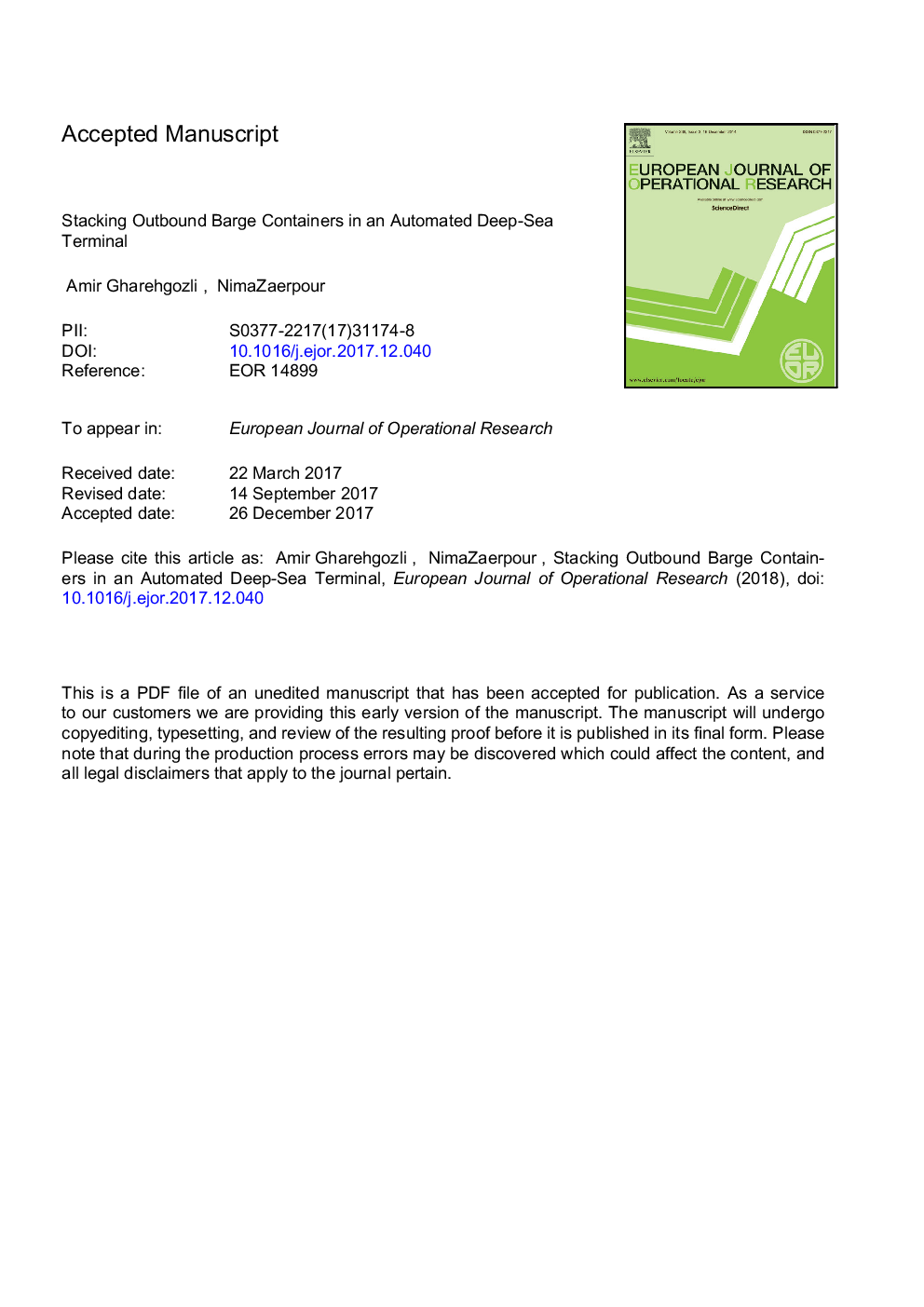| Article ID | Journal | Published Year | Pages | File Type |
|---|---|---|---|---|
| 6894962 | European Journal of Operational Research | 2018 | 43 Pages |
Abstract
In this paper, we study the stacking problem of outbound containers in a deep-sea container terminal. In such a terminal, outbound containers -to be transported by barge to the hinterland or other terminals within the port area- are stacked in a container stack. Reshuffling which is the process of removing interfering containers to access a desired container is one of the main challenges of such container terminals. In order to avoid reshuffling, container terminals commonly use a stacking policy in which each pile (column) accommodates the containers of the same barge with the same weight class, destination, etc. However, due to a limited number of containers per barge per weight class and destination, this policy might result in a low stack utilization. To address this issue, this study proposes an alternative stacking policy allowing different container types to share the same pile. We aim to minimize the total retrieval time of a set of containers. We show that the problem is strongly NP-complete. Thus, we propose a heuristic to quickly solve the problem and we compare the results with a lower bound. The results show that the proposed stacking heuristic can provide solutions with a gap of less than 10% with the lower bound for real-sized instances with high utilization. In addition, the results show that the stacking heuristic can reduce the total retrieval time up to 30% compared to often-used in practice stacking policy. Furthermore, in order to investigate the performance of the proposed stacking policy under different settings, we perform a sensitivity analysis by varying block configuration, number of barges, barge size, and barge arrival time window.
Related Topics
Physical Sciences and Engineering
Computer Science
Computer Science (General)
Authors
Amir Gharehgozli, Nima Zaerpour,
